Maison Myeongjae[Korea Quality] (논산 명재고택 [한국관광 품질인증])
11.2 Km 10549 2023-04-13
50, Noseongsanseong-gil, Noseong-myeon, Nonsan-si, Chungcheongnam-do
+82-41-735-1215, +82-10-6310-1139
Located in Noseong-myeon, Nonsan-si, Chungcheongnam-do, Myeongjae Historic House was built by Yun Jeung (pen-name: Myeongjae, 1629-1714), a scholar during the reign of King Sukjong (r. 1674-1720) of the Joseon Dynasty. It is said that although the king granted him a government post on eighteen occasions, Yun, being a straightforward sort of person, declined them all. As he practiced the virtue of simplicity and sharing in life and taught it to younger generations, the house escaped destruction during the Donghak Peasant Revolution (1894) and the Korean War (1950-1953) thanks to the efforts of his disciples. Thus, in keeping with his character, the house looks moderate compared to the homes of other aristocrats, although it exhibits a refined interior and a scientific design. The house consists of a sarangchae (men’s quarters), anchae (women’s quarters), and daecheongmaru (main floored room) configured in a square layout. The sarangchae itself consists of the keun sarangbang (large room) flanked by a daecheong and a numaru with an open view of the village and a mountain, the jakeun sarangbang (small room), the ansarangbang (inner room), and the daemungan (gate). To the right of the house is the spectacular sight created by a platform filled with hundreds of crocks for traditional sauces and condiments. The wall situated between the sarangchae and the anchae was designed to prevent people from looking into the anchae. There is also an open space below the wall from which one could see the shoes of a visitor, thus enabling the occupants of the anchae to know whether there was a visitor or not in the sarangchae. In addition, the gotganchae (storage quarters) situated next to the anchae is designed in such a way that it diminishes in size towards the north because the summer wind blowing from the south escapes the narrow passageway of the north, so it blows faster and the surrounding area gets colder, while the wind winter blowing from the north escapes the large passageway of the south, protecting the building from the bitter wind of the north. Therefore, the storeroom at the north end of the gotganchae remains cool even in summer, thereby preserving the things (food and other commodities) stored there. The guestrooms of the house include the three sarangbang rooms in the sarangchae building and the geonneonbang (a room opposite the main living room) in the anchae. The entire sarangchae building including the numaru can be rented too. Guests can also rent the thatched-roof byeolchae in the courtyard, which features a choyeondang equipped with a sound system and a beam projector, as well as a modern bathroom, for group meetings or performances. The house also runs a variety of paid traditional experience programs including Gukak (Korean classical music), tea ceremony, natural dyeing, and so on. Other noteworthy features of the house include the sarangchae’s distinctive gate, which combines a sliding door with a hinged door, the looming presence of a mountain to its rear, and the little round island (pond) planted with an old crape myrtle at its front.
Le Hall Jeongsimhwa au Centre Culturel International à l’Université Nationale de Chungnam (충남대학교 정심화국제문화회관)
11.3 Km 779 2019-05-15
99, Daehak-ro, Yuseong-gu, Daejeon-si
+82-42-821-8080
Le Centre Culturel International de Jeongsimhwa est un grand bâtiment situé sur la droite, juste après avoir passé la porte de l’Université Nationale de Chungnam.
‘Jeongsimhwa’ est le nom bouddhiste de Ms. Lee Bok-Soon, qui a donné ses épargnes à l’université en 1990 (5 milliards de won). Elle a gagné cet argent pendant de nombreuses années en vendant des gimbabs (riz enroulé dans une algue séché), qui se vendent environ 1000 ou 2000 won pièce.
Le centre culturel fut construit pour rendre hommage à Ms. Lee. Après de longs efforts de constructions, le projet fut complété en 2000. Le Hall Jeongsimhwa au centre dispose de 1817 sièges et il est utilisé pour les concerts, les performances et d’autres évènements à grande échelle. Le Hall Baekma (450 sièges) et le Hall Daedeok (200 sièges) sont utilisé premièrement pour les séminaires. Un parking de 268 places a également été construit au Centre Culturel International Jeongsimhwa pour faciliter l’accès aux visiteurs.
B station(비스테이션)
11.3 Km 275 2020-04-15
30-12, Gyeryong-ro 141beon-gil, Yuseong-gu, Daejeon
+82-42-719-8000
B Station is located in Daejeon, near the center of research & development, making it a suitable accommodation choice for people attending trainings and science events. The hotel can also facilitate various events, including seminars and workshops. Guestrooms all feature high-speed internet, and hot springs water from Yuseong Hot Springs.
Hotel Interciti (호텔 인터시티)
11.4 Km 11675 2021-02-05
92, Oncheon-ro, Yuseong-gu, Daejeon
+82-42-600-6000
Hotel Interciti is located along a tributary of the Geumgang River in Bongmyeong-dong, Yuseong-gu, Daejeon and offers a wide open view of the city. It has gained an excellent reputation for providing comfortable and convenient services to travelers. The hotel is equipped with natural hot springs and Korean and Western restaurants, as well as various banquet halls. High speed internet is available in each of the hotel's guestrooms.
KYERYONG SPATEL Mallijangseong(계룡스파텔 만리장성)
11.4 Km 67 2021-04-14
81, Oncheon-ro, Yuseong-gu, Daejeon
+82-42-602-1433
It is a place for not only family gatherings, but also group dinners. This restaurant's signature menu is spicy white seafood noodle soup. This Chinese (cuisine) restaurant is located in Yuseong-gu, Daejeon.
Habitat des hérons à Gamseong-ri (감성리 백로서식지)
11.8 Km 12730 2019-10-30
Sejong-si Geumnam-myeon Gamseong-ri
+82-44-120
L’habitat des hérons à Gamgseong-ri recouvre une petite montagne dans le district de Yuseong-gu. Existant depuis la dynastie Joseon, l’habitat est le foyer des types les plus communs de hérons, ainsi que des hérons garde-boeufs. Plus de 5 000 oiseaux ont pu être observés au même moment. Avril et mai représentent la meilleure période pour visiter l’habitat.
Musée de la géologie (지질박물관)
12.8 Km 29615 2022-10-17
124, Gwahak-ro, Yuseong-gu, Daejeon
+82-42-868-3798
Le Musée de la géologie situé dans l'arrondissement de Yuseong-gu à Daejeon, est le premier musée international en Corée consacrée à la géologie. Le musée bénéficie d'une conception architecturale inspirée par la cuirasse d'un Stégosaure tout en étant divisé en une salle principale, deux salles d'exposition, une salle de scéance, un espace d'exposition en plein air, et une salle d'exposition spéciale. <br> La salle principale du musée présente des dinosaures et des fossiles ainsi que d'autres éléments liés aux dinosaures. La salle d'exposition 1 se décompose via trois thèmes différents : Terre, Fossiles et Evolution. La salle d'exposition 2 présente divers minéraux d'affichage, des roches et des extraits de météorites.
Centre éducatif sur les inventions (발명교육센터 창의발명체험관)
13.2 Km 2595 2020-07-14
Daejeon, Yuseong-gu, Gwahak-ro (대전광역시 유성구 과학로 82)
+82-42-601-4458
Le Centre éducatif des inventions permet de sensibiliser le grand public sur les inventions modernes sur un esapce de 4 étages via divers programmes d'activités ludiques.
Temple Yeongpyeongsa (영평사)
13.3 Km 2940 2021-10-27
441, Sanhak-ri, Janggi-myeon, Gongju-si, Chungcheongnam-do
+82-44-857-1854
Le temple de Yeongpyeongsa est une branche du temple de Magoksa, le 6ème temple local de l’ordre de Jogyejong. Il abrite six bâtiments traditionnels et trois petits hermitages. La montagne Janggunsan, où le temple est situé, est petite de par son envergure mais elle est réputée pour son côté énergisant. Selon les principes du Feng Shui, la montagne constitue un emplacement parfait pour accueillir un temple, car elle prend la forme d’un dragon enroulé le long de la rivière Geumgang.
Yeongpyeongsa est un endroit tranquille, qui personnifie la pureté des pratiques bouddhistes du temple, avec un air frais et une eau pure qui forment un habitat pour les lucioles, les écrevisses et les escargots noirs. En chemin, les visiteurs sont accueillis par une multitude de fleurs sauvages rivalisant pour attirer l’attention : les ancolies et les pulsatilles au printemps, les lotus blancs en été et les chrysanthèmes sibériens en automne.
Musée de la Monnaie de Corée (화폐박물관)
13.6 Km 31876 2019-03-26
80-67 Gwahak-ro, Yuseong-gu, Daejeon
+82-42-870-1000
Le musée de la monnaie de Corée est le premier musée intégralement dédié aux devises modernes et anciennes. Il est dirigé par la « Mint Corporation of Korea » comme un service public à but non lucratif et ouvre ses portes gratuitement aux visiteurs dans le but d’améliorer les connaissances du public sur la monnaie nationale. Le musée contient pas moins de 120 000 objets, incluant des pièces actuellement utilisées en Corée et à l’étranger, des pièces des temps modernes (depuis la période tardive de la dynastie Joseon jusqu’à de nos jours), 80 sortes de pièces commémoratives, 88 types de monnaies spéciales, des timbres de poste et autres éléments.
![Maison Myeongjae[Korea Quality] (논산 명재고택 [한국관광 품질인증])](http://tong.visitkorea.or.kr/cms/resource/40/1878940_image2_1.jpg)

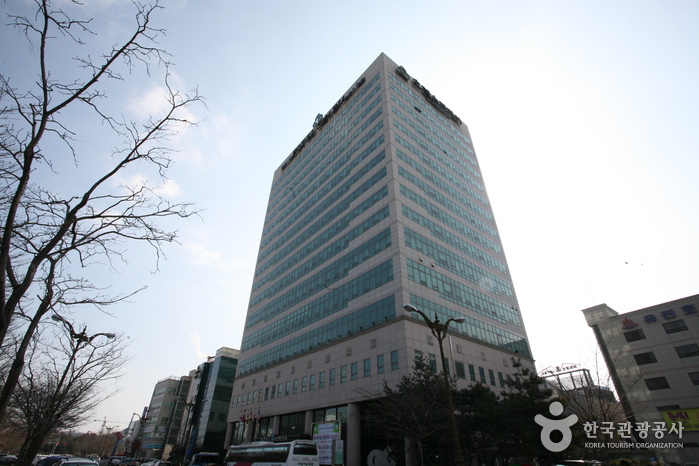
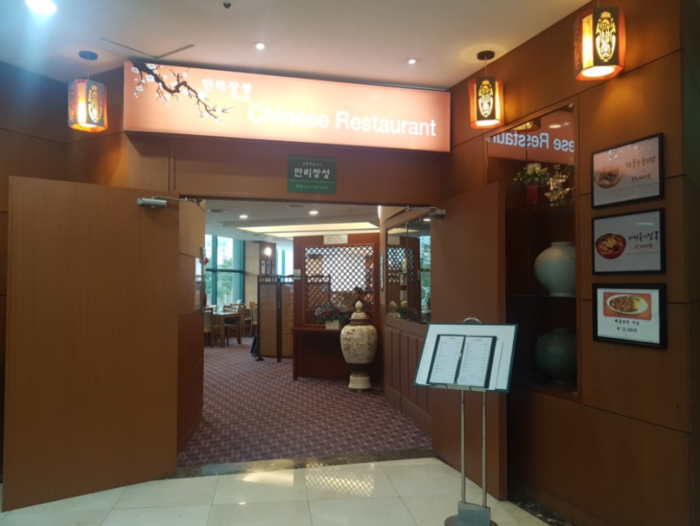
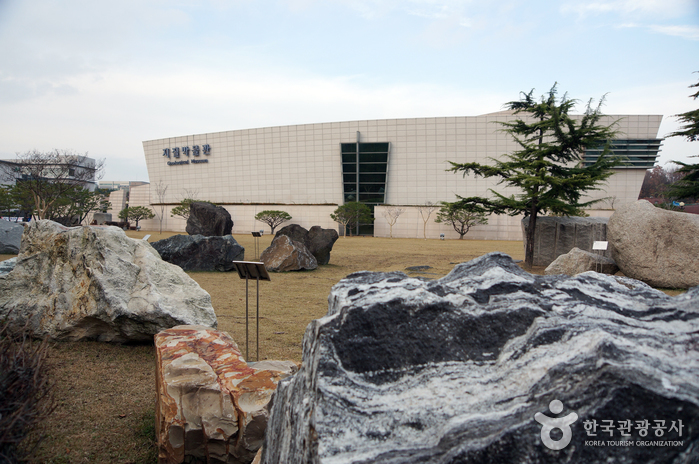
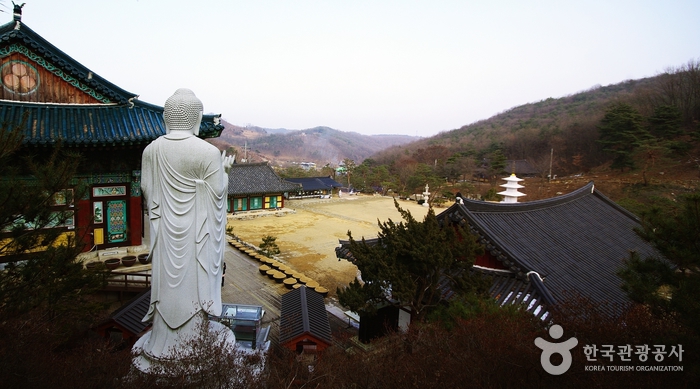
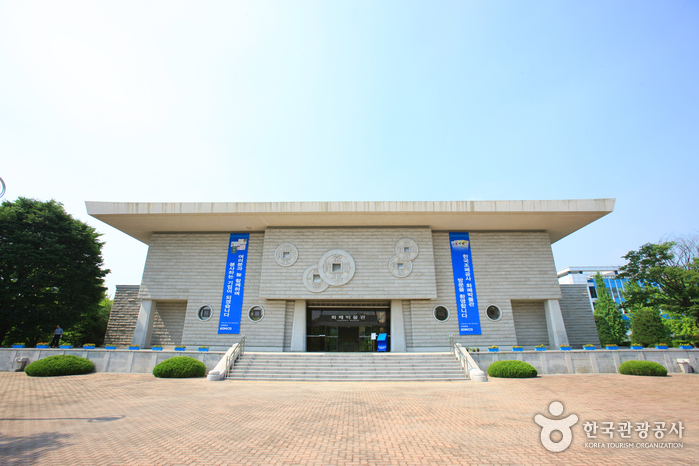
 Français
Français
 한국어
한국어 English
English 日本語
日本語 中文(简体)
中文(简体) Deutsch
Deutsch Español
Español Русский
Русский